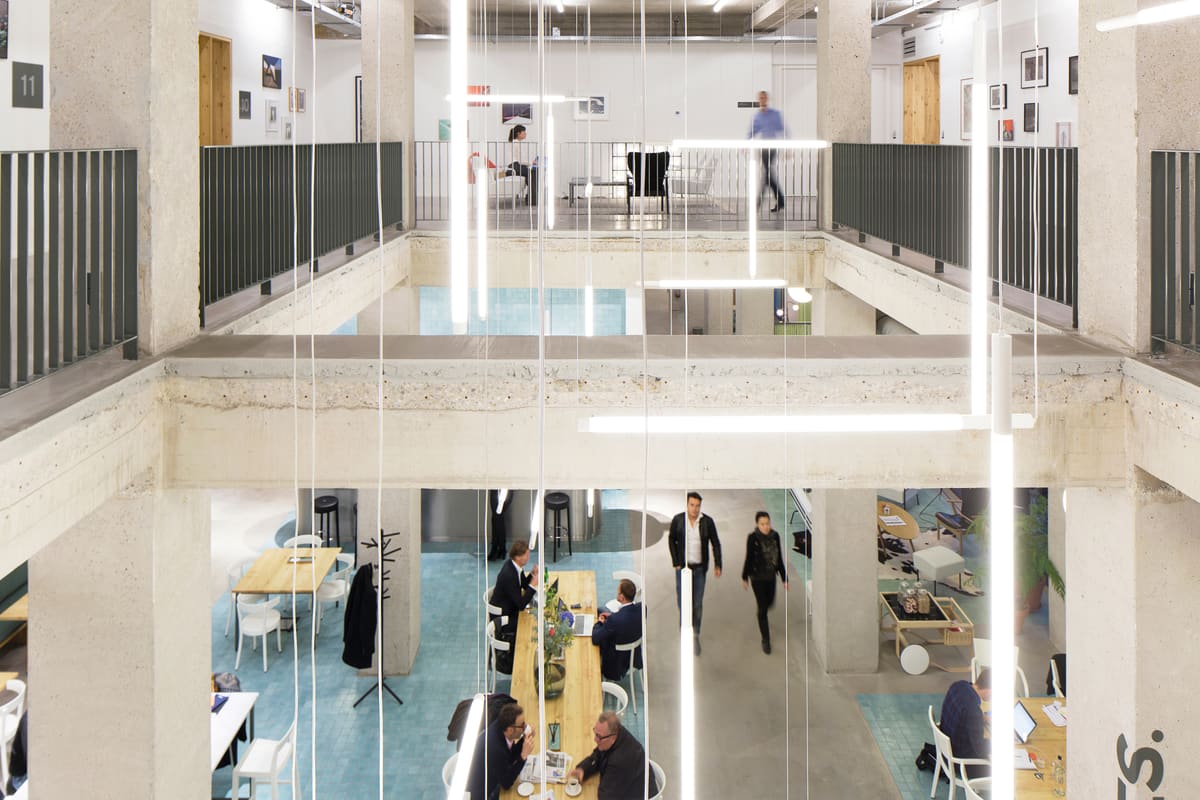Many forward-thinking businesses have moved to a hybrid working model, but what should the balance be between main office and remote working? A 2:3 ratio? A 3:2? Or perhaps something different altogether…
As the business world adjusts to the new era of hybrid working, there’s experimentation afoot. Nobody yet has the definitive answer to the question of how many days a week employees should be in a company HQ or workspace versus working from home, and for many companies it’s a case of trial and error. Should enterprises be looking at a 2:3 ratio? 3:2? 4:1? Something else? Is there a best ratio for optimum productivity? The jury’s still out, but there are early indications…
Finding the ‘sweet spot’
Three days a week in the office is common, with Google among those choosing the 3:2 ratio. A poll of US workers conducted last year showed that many believe three days to be the ‘sweet spot’, while IWG’s study of its 300 flexible UK workplaces discovered that Tuesday, Wednesday and Thursday are employees’ preferred days to be in an office.
With 23% more workers choosing the middle three days rather than the start and end of each week, avoiding potentially hectic Monday and Friday commutes, this supports the idea that employees are using hybrid working to strike a better work-life balance, using a company HQ or workspace only in the middle of the week and enjoying more days in a row at home.
The effect on productivity is noticeable. Recent research from Harvard Business School suggests that “an intermediate number of days in the office results in more emails sent, a higher number of email recipients, and increased novelty of work products.” This puts the optimum ratio at two or three days a week of office time, without coming down firmly on which.
Employees’ views differ
But surveys and research around the subject suggest that imposing mandatory office hours will not sit well with the majority of workers. Indeed, many are actually quitting their jobs in protest at return-to-work policies.
In a 2022 survey, global recruiting firm Robert Half found that half of American employees working from home “would look for a new job if required to return to the office full time”. This striking fact is behind what’s become known as the ‘Great Resignation’. Tech giant Apple found itself at the centre of one of the most high-profile cases when its director of machine learning, Ian Goodfellow, resigned following its policy ramping up office days to three a week.
There’s no ‘one size fits all’
Perhaps, then, two days a week is the sweet spot, not three, with even Apple compromising at two (at least for the time being). But it would be more accurate to say that there is actually no ‘one size fits all’ when it comes to ratios. What works for one employee won’t work for another; what works for one business won’t work for another.
While clarity over company policy is necessary to ensure employers’ expectations are clear to employees, it would seem that rigid return-to-work policies aren’t going down well among a workforce who have grown used to the freedom of working from home or at a flexible workspace on their doorstep. To that end, the companies making hybrid a success seem to recognise that the answer to this debate lies in flexibility: in placing trust in employees and giving them licence to work when, where and how they want.
As has been reported, Grammarly is among those doing this by adopting a “remote-first” hybrid model, putting home working centre stage while using its offices in Kyiv, New York, San Francisco and Vancouver as local “hubs” for the times when face-to-face work is advantageous. Grammarly CEO Brad Hoover is quoted explaining, “We believe this balanced approach gives our team members the best of both worlds: plenty of focus time as well as in-person collaboration that fosters trust, unlocks creativity and accelerates innovation.”
The same article quotes Jen Scherler-Gormley, head of HR in the UK and Ireland for Cisco Systems, who have acquired access to 3,500 IWG workspaces across the world. “It’s all about the learning process,” she says. “You can’t just create a one-off perfect hybrid work model. Circumstances may change in a few weeks, months or years. Keep your approach flexible, not fixed.”
And therein lies another truth to the debate surrounding the optimum home-office ratio: finding that ‘sweet spot’ won’t happen overnight. Flexibility is key, both in this experimental phase and in the logistics of long-term office arrangements to support these new ways of working.
Discover how IWG can help your company find its hybrid sweet spot, with advice on your workplace strategy and access to 3,500 flexible workspaces worldwide.






